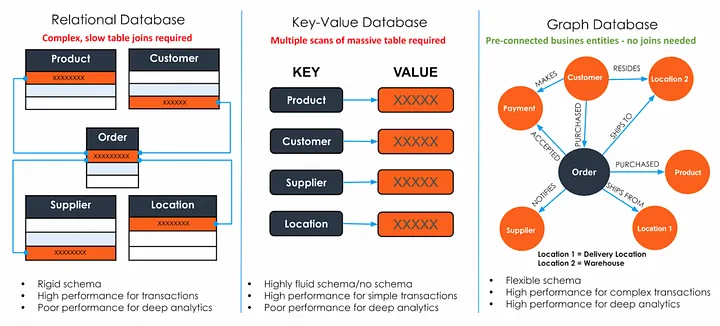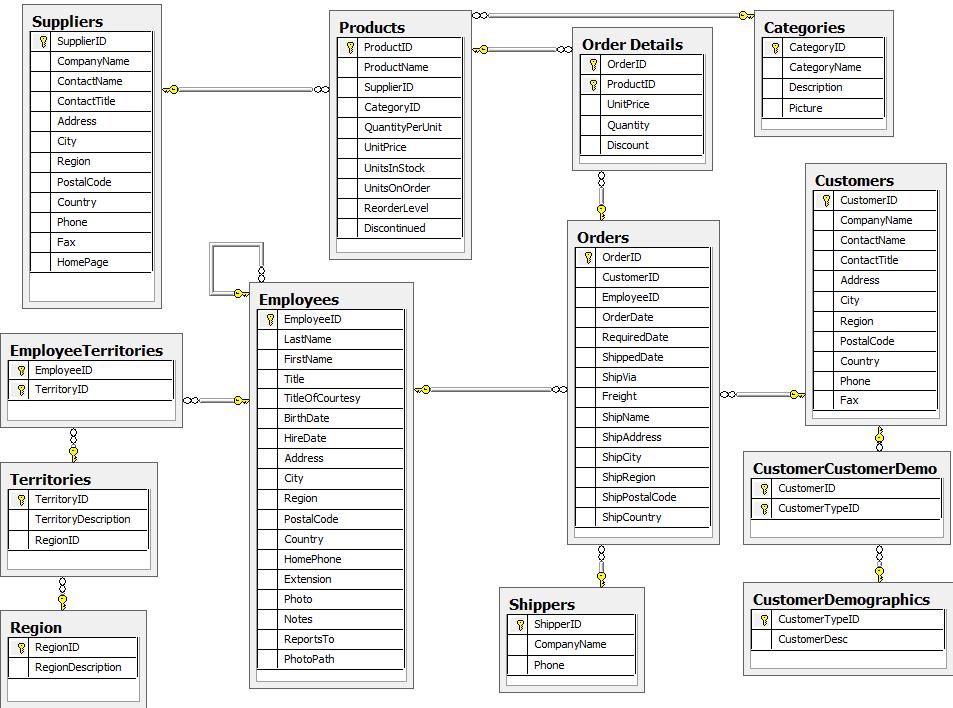Neo4j
Introduction
Neo4j is an open-source graph database management system that helps store and query complex relationships between data. It is commonly used in web development for applications that involve relationships such as social networks, recommendation systems, fraud detection, e-commerce websites and many others. It provides efficient querying of data relationships and has a user-friendly query language, making it accessible to web developers of different levels of expertise.
Brief History
The first code for Neo4j and the property graph database was written in IIT Bombay
Said the chief Marketing Officer at Neo4j, Chandra Rangan.
Neo4j was founded in 2007 by Emil Eifrem. It was created with the goal of providing a better solution for managing complex data relationships, which are often not well supported by traditional relational databases. The first version of Neo4j was released in February 2010 and since then, it has become, one of the most popular graph database management system, with a large community of users and developers. Over the years, Neo4j has received several updates and new features, making it one of the most versatile and powerful graph databases available today.
Features
-
ACID transactions: Neo4j provides Atomicity, Consistency, Isolation, and Durability (ACID) transactions, that allow users to ensure the consistency and integrity of their data.
-
Graph data Modeling: Neo4j provides a flexible graph data model that allows users to store and manage complex relationships between data.
-
Cypher query language: Neo4j has a user-friendly query language called Cypher, which makes it easy to query data relationships and perform complex analysis.
-
Scalability: Neo4j provides scalability options that allow users to scale the database to meet the demands of their applications.
-
Real-time performance: Neo4j provides real-time performance for querying data relationships, making it suitable for use cases that require fast data analysis.
-
Community and support: Neo4j has a large and active community of users and developers, providing support, resources and documentation.
These features make Neo4j a versatile and powerful tool for managing and querying data relationships, making it a popular choice for a wide range of use cases.
Strengths
-
High performance: Neo4j is designed for efficient querying and analysis of data relationships, providing high performance for real-time data analysis.
-
Efficient data relationships: Neo4j’s graph data model enables efficient storage and querying of data relationships, making it ideal for use cases that involve complex relationships between data.
-
Fast querying: Neo4j provides fast and efficient querying of data relationships, making it suitable for use cases that require real-time data analysis and decision-making.
-
Integration: Neo4j provides integrations with other systems and technologies, making it easy to work with other tools and technologies.
-
Scalability Neo4j can handle large amounts of data and high numbers of concurrent users, making it suitable for use cases that involve big data and high traffic.
-
Reliable transactions: Provided using ACID transactions, ensuring that database operations are completed successfully or not at all, making it a reliable solution for critical data.
Weaknesses
-
Higher resource requirements: Compared to traditional relational databases, Neo4j requires higher resources for storage and processing, making it less suitable for use cases with limited resources.
-
Complex deployment: Neo4j may require more complex deployment and maintenance compared to other databases, especially for large-scale deployments.
-
Analytics capabilities: It may not be as well suited for more advanced analytics and data processing, compared to other databases such as: Greenplum, Casandra, MongoDB, Apache Hadoop etc.
-
Document storage: It is well suited for managing complex relationships between data but, it may not be as well suited for document storage as compared to other NoSQL databases such as MongoDB, which is specifically designed for document storage and can handle a diverse range of document storage tasks.
Comparison
The comparison of Neo4j with other graph databases
Alongside Neo4j, Amazon Neptune and TigerGraph are two major players in the graph database market.
Neo4j and Amazon Neptune are both popular graph databases, but they have distinct differences in terms of data model, scalability, performance, and integration. While Neo4j provides a flexible graph data model and uses the Cypher query language, Neptune provides better scalability and integration with other AWS services.
TigerGraph is a high-performance graph database management system that provides real-time analysis of complex relationships. While both Neo4j and TigerGraph provide efficient querying of data relationships, TigerGraph provides better performance for large-scale use cases and provides advanced analytics capabilities.
The comparison of Neo4j with SQL and NoSQL databases

Image form: https://medium.com/@tigergraph/what-is-a-graph-database-and-why-should-you-care-d537124c7f39
As illustrated in the example graph databases are uniquely designed to analyze relationships among data by pre-connecting the data entities and relationships, which eliminates the need for time-consuming table joins or multiple scans across large tables. This sets them apart from traditional relational databases and NoSQL databases, making them an ideal choice for applications that prioritize relationship analysis.
The following is an example of relational and graph models from: https://neo4j.com/developer/cypher/guide-sql-to-cypher/
Relational model

Image form: https://neo4j.com/developer/cypher/guide-sql-to-cypher/
Graph model

Image form: https://neo4j.com/developer/cypher/guide-sql-to-cypher/
Joining Products with Customers
We want to see who bought Chocolade. Let’s join the four tables together, refer to the model (ER-diagram) when you’re unsure.Plsql:
SELECT DISTINCT c.CompanyNameFROM customers AS cJOIN orders AS o ON (c.CustomerID = o.CustomerID)JOIN order_details AS od ON (o.OrderID = od.OrderID)JOIN products AS p ON (od.ProductID = p.ProductID)WHERE p.ProductName = 'Chocolade';The graph model (have a look) is much simpler, as we don’t need join tables, and expressing connections as graph patterns, is easier to read too.
Cypher:
MATCH (p:Product {productName:"Chocolade"})<-[:PRODUCT]-(:Order)<-[:PURCHASED]-(c:Customer)RETURN distinct c.companyName;Summary
In summary, Neo4j is a powerful graph database management system that is designed for efficient storage and querying of data relationships. It provides fast querying, easy-to-use Cypher query language, scalability, integrations, and reliable transactions, making it a versatile solution for a wide range of use cases. However, it has limitations in terms of analytics capabilities, higher resource requirements, limited adoption and higher cost, making it more suitable for specific use cases.
Neo4j is relevant because it provides a solution for efficiently storing and querying data relationships, which are common in web development. It can be used to store and manage data for web applications that involve complex relationships, such as social networks, recommendation systems, and e-commerce websites. Additionally, the Cypher query language provided by Neo4j is easy to read and understand, making it accessible. Overall, it can provide web developers with a powerful tool for managing complex data relationships and enabling more efficient data analysis.
Credits
- Viorel Lazari (https://github.com/VLazari)
References
- https://neo4j.com/use-cases/
- https://en.wikipedia.org/wiki/Graph_database
- https://en.wikipedia.org/wiki/Neo4j
- https://analyticsindiamag.com/the-origin-of-neo4j/#:~:text=Founded%20in%202007%2C%20Neo4j%20has,Partners%2C%20DTCP%2C%20and%20Lightrock.
- https://dbdb.io/db/neo4j
- https://towardsdatascience.com/comparing-graph-databases-5475bdb2e65f
- https://neo4j.com/docs/cypher-manual/current/access-control/limitations/
- https://www.educba.com/neo4j-vs-neptune/?source=leftnav
- https://db-engines.com/en/system/Neo4j%3BTigerGraph
- https://www.youtube.com/watch?v=oRtVdXvtD3o
- https://www.youtube.com/watch?v=T6L9EoBy8Zk
- https://www.youtube.com/watch?v=8jNPelugC2s
- https://www.javatpoint.com/features-of-neo4j
- https://alronz.github.io/Factors-Influencing-NoSQL-Adoption/site/Neo4j/Results/Strengths%20and%20Weaknesses/#weaknesses
- https://greenplum.org/top-ten-open-source-big-data-database/
- https://neo4j.com/developer/cypher/guide-sql-to-cypher/
- https://medium.com/@tigergraph/what-is-a-graph-database-and-why-should-you-care-d537124c7f39